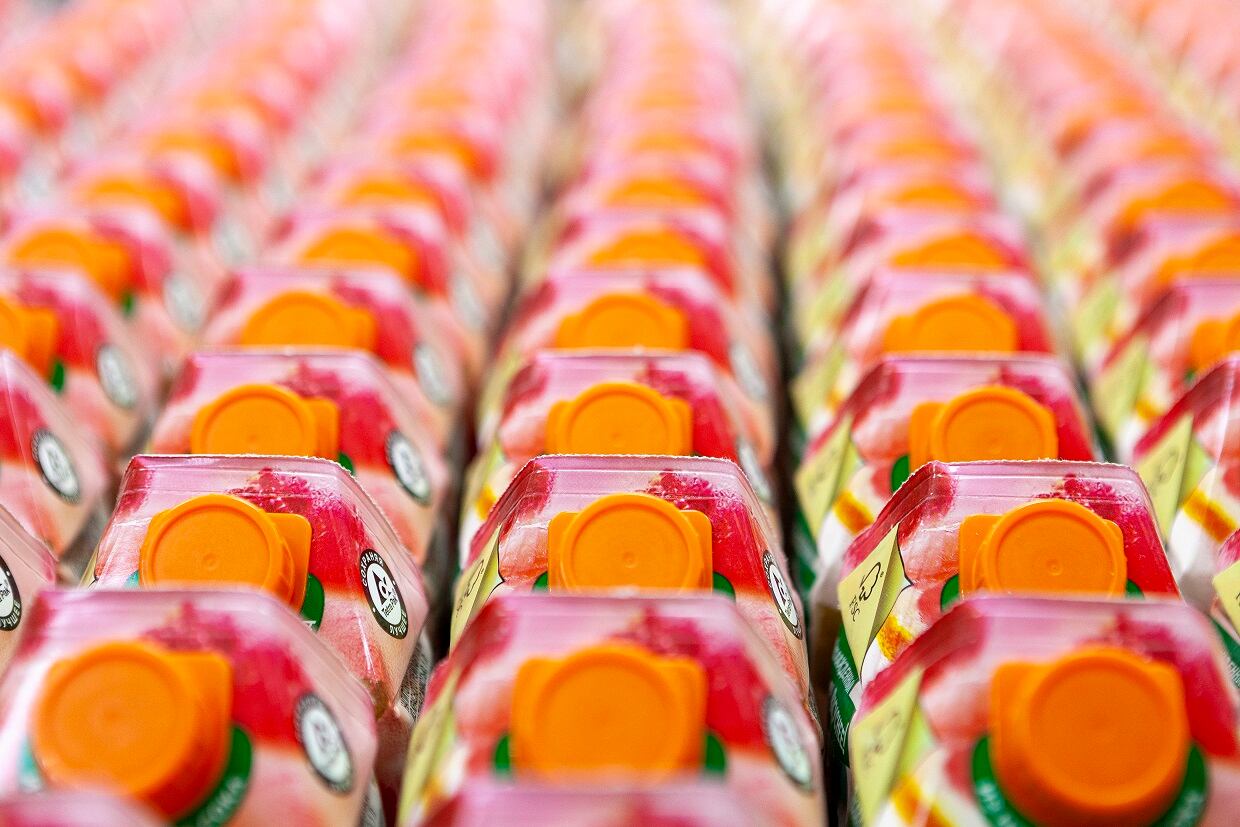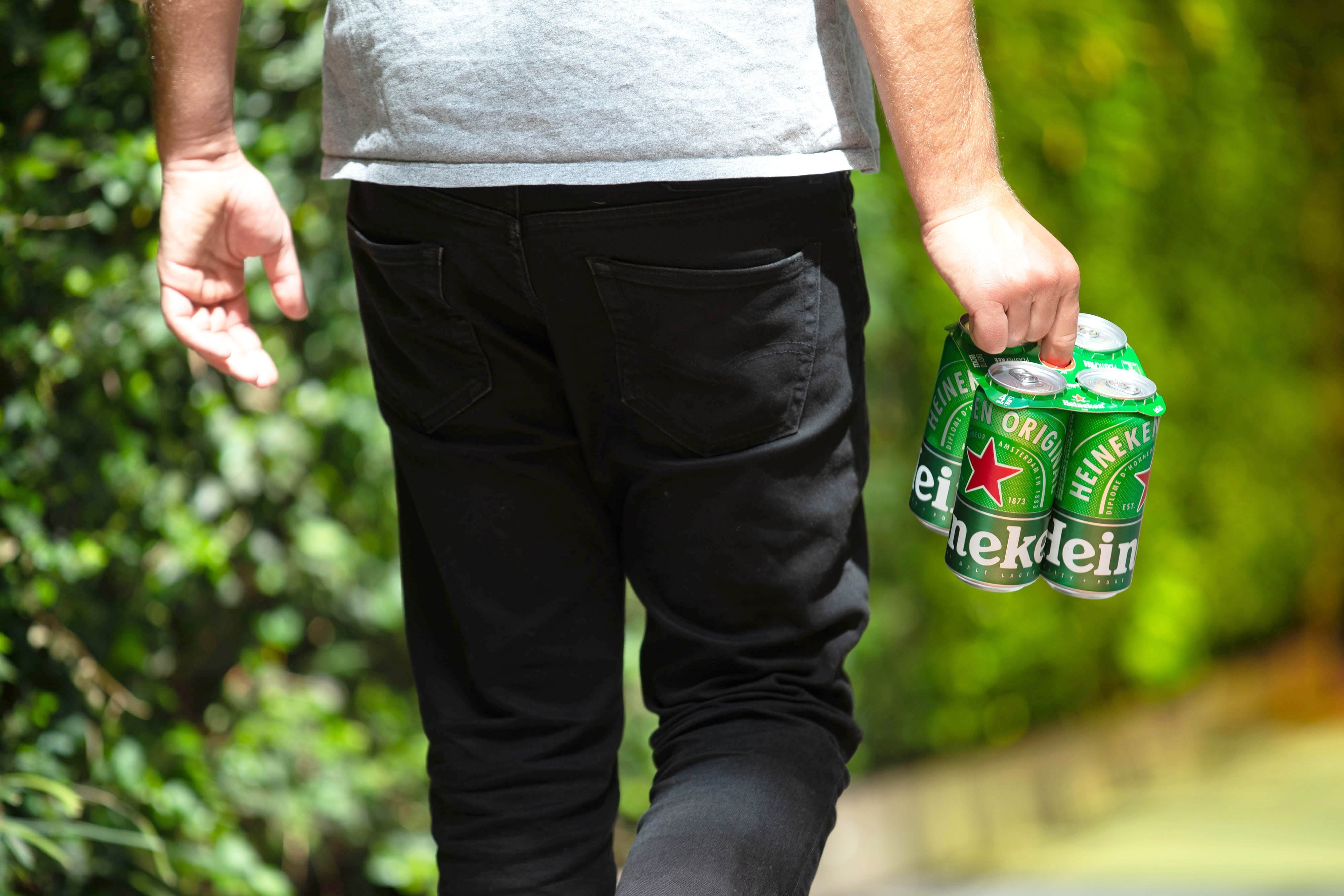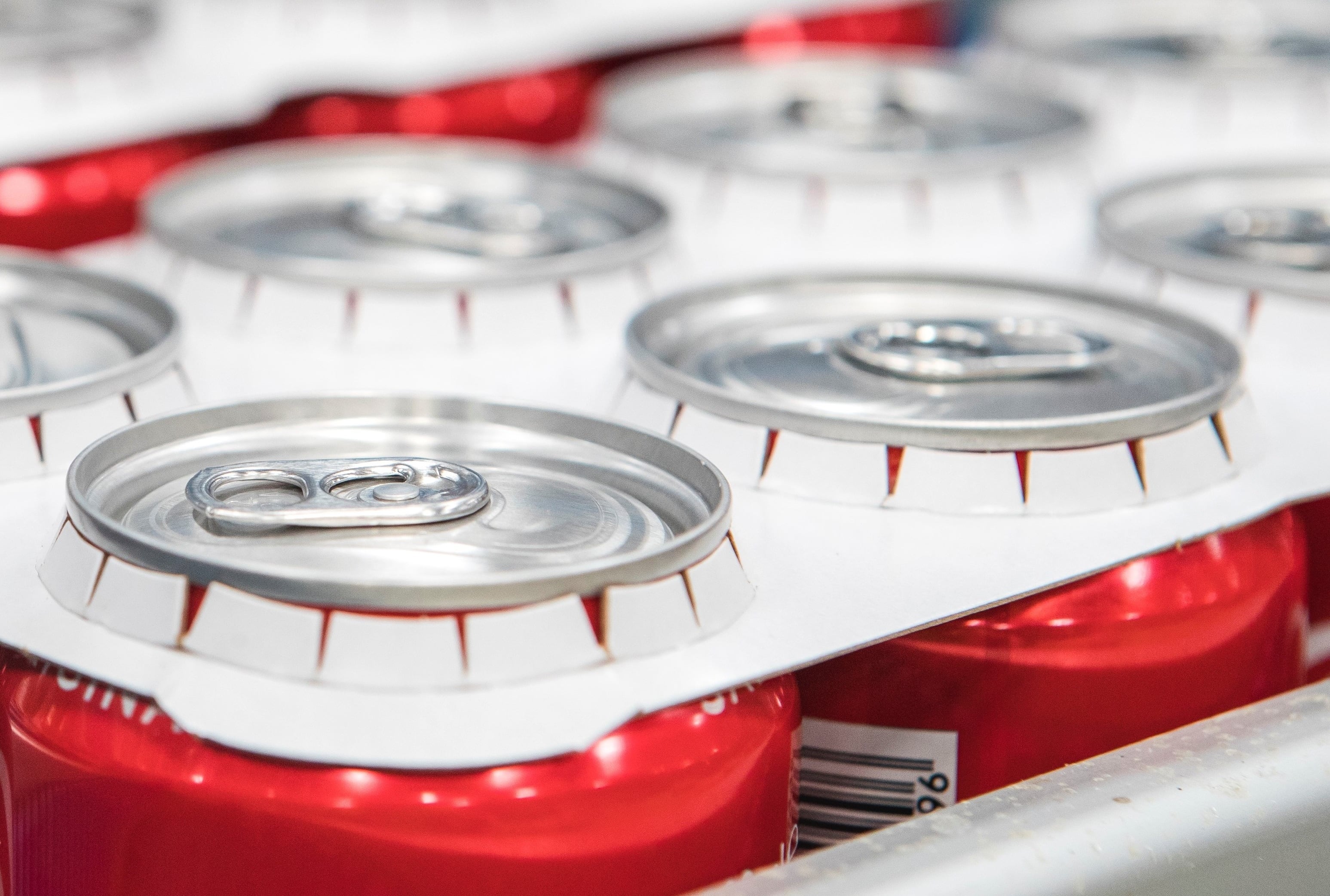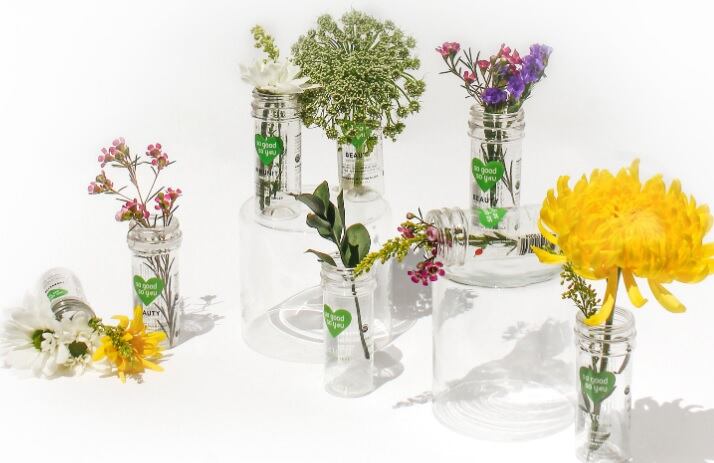While primarily made from paperboard, cartons contain a plastic and aluminum layer to contain the liquid: while polymers are also used in caps, closures and straws.
The ideal packaging of the future, according to Tetra Pak, should be made solely from renewable or recycled packaging materials. It should also be completely recyclable – with consumers following through and recycling every pack they use. And the overall sourcing and construction should support a low-carbon circular economy.
Creating the ideal package of the future involves looking critically at each component of the pack: from each layer to the caps and straws attached.
Plastic : from recycled content to bio-based alternatives
For Tetra Pak, the base materials used are approximately 71% paperboard, 24% polymer and 5% aluminum.
While all of Tetra Pak’s paperboard comes from forests certified to Forest Stewardship Council standards, it’s the plastic and aluminum layers that are the trickiest to address when it comes to sustainability.
Tetra Pak’s ambition for all packages is to use renewable and/or recycled polymers for the plastic layer, or an alternative fibre or cellulose-based material, with no further extraction of fossil feedstock necessary. However, it notes there is still much work to be done before renewable polymers can fully replace traditional fossil-fuel based polymers, since the industry to convert raw materials is still ‘embryonic’.
Tetra Pak is aiming to incorporate a minimum of 10% recycled plastic content on average across its beverage cartons sold in Europe by 2025.
“Our ambition is to deliver a package that contributes to a low carbon circular economy, that is, a package fully renewable and recyclable, without ever compromising on food safety requirements,” Markus Pfanner, vice president of sustainability at Tetra Pak, told BeverageDaily.
“In order to achieve this goal, we started to investigate different options to integrate recycled content (for both fibres and plastics) into our packaging material. Currently, when it comes to the type of polymers we use, i.e., polyolefins, there are legal constraints for the use of recycled contents in food packaging. In some countries, such as China, this is not allowed, and there is no timeline yet for when safe, food-grade recycled polyolefins will be legally acceptable and commercially available.
“So, our commitment to incorporate a minimum of 10% recycled plastic content on average across our beverage cartons sold in Europe by 2025 is subject to suitable food-grade recycled plastic being technically and economically available.”
In October 2019, Tetra Pak, in partnership with supplier Braskem, obtained Bonsucro Chain of Custody certification, which concerns the supply of plant-based polymers from sugarcane. As of March this year, all Tetra Pak products which use plant-based polymers are now Bonsucro certified.
Aluminum: 5% of the pack - but 33% of the impact
Although thinner than a human hair, the aluminum layer inside an aseptic package is responsible for around a third of the climate impact of Tetra Pak’s base materials. The company says that working to replace this layer is a priority.
It is beginning a field test of its first aseptic package using an alternative to the aluminum barrier, although it is not revealing any of the details of this alternative material at this point.
In sourcing base materials – whether paperboard, polymer or aluminum - Tetra Pak notes the necessity of responsible sourcing. “Our management process for base material suppliers includes setting reduction targets for CO2 emissions and we report supplier performance against these,” says Pfanner. “We focus on improvement opportunities and allocate purchasing to maximise carbon footprint reduction. Other key criteria include promoting biodiversity and water stewardship, and ensuring no direct or indirect negative land use change.”
Paper straws
Last year Tetra Pak launched paper straws for its cartons in Europe. While the initial cost of using a paper straw is higher than that of a plastic one (it has not disclosed the specific price) Pfanner says the increasing demand the company sees will help drive higher scale of production over time.
“A variety of straws that are either paper-based or manufactured using other alternative materials are available on the market today, and are increasingly being used in restaurants, food-chain outlets and bars.
“However, considering the regulatory, consumer and product standard required for on-pack straws in combination with portion-sized carton packages, we do not believe it is possible to supply paper straws to meet global demand yet, simply due to the magnitude of the technical and industrialisation challenges to be overcome. While the total volume is commercial information which we are unable to share at present, we are increasing production quickly to meet our customers’ demands, including paper straws and new drink-from systems that are currently under development, integrated within the package.
“It's worth noting that not all our portion size cartons are going to have paper straws though, as it strongly depends on the purpose of the product and the needs of the consumer. We will continue to offer products with different attached caps and closures, as well as some with just a perforation.”
‘Our goal is to field test an aseptic package made fully from renewable sources by 2022’
As part of Tetra Pak’s efforts to develop its low-carbon packaging, market trials are planned this year for a carton with alternative non-foil barrier, while the field test of aseptic package made fully from renewable sources planned to take place in 2022.

But Pfanner warns that focusing on low carbon packaging alone does not tell the whole story.
“The complexity of sustainability and climate change requires a holistic approach. For the food and beverage industry especially, this is a time of transition and change, with increased pressure across the business, from waste management and sustainable materials to energy use to taking a full value chain view.
“We have recently committed to reach net-zero GHG emissions in our own operations by 2030, with the ambition to achieve the same goal across the value chain by 2050. We also appreciate that delivering on this commitment will not be easy or quick and we recognise we cannot do this alone. Above all else, to be successful in creating a low carbon, circular economy, partnership working is key.
“Collaboration is critical in each of the areas we identified to achieve our ambitious goal. This includes working with our suppliers to reduce upstream carbon emissions, for instance by setting ambitious renewable energy targets and increasing the use of renewable and recycled polymers, as well as partnering with customers to help them achieve their emission reduction targets through packaging solutions with minimal carbon footprint, up to collaborating with manufacturers, brands, waste management companies, recyclers, municipalities, industry associations and equipment suppliers to develop sustainable recycling value chains.
"Our vision is that all beverage cartons can be collected for recycling, and zero beverage cartons become litter or are sent to landfill.
“We believe that this collaborative approach across the value chain, coupled with our ability to set and demonstrate progress in line with science and societal expectations and our innovation drive position ourselves on the right path to reach net-zero in our operations by 2030 and realise our net zero ambition by 2050.”




